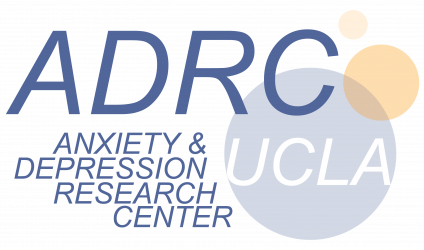The below listed studies are studies undertaken through the Depression Grand Challenge.
NIMH P50 ALACRITY Center Grant
Dr. Michelle Craske and Dr. Kate Taylor are PIs of a P50 ALACRITY Center grant from the National Institute of Mental Health, that focuses on community college (CC) students because CC students suffer high rates of depression and anxiety in the face of daunting life challenges (e.g. housing and food insecurity) without adequate mental health resources. The research undertaken within the Center aims to optimize the effectiveness and implementation the STAND model (a novel integrated system of care that matches individuals to self-guided online wellness program, digital CBT with coaching, or clinical care) in a low-income, diverse community college student population, and explore pathways for sustainability and spread to other community colleges. In addition to the research projects, center activities include: stakeholder engagement, training, mentorship and continually working to better understand the needs of California community colleges and their communities.
Currently, the Center is working on four research projects leveraging the STAND implementation at East Los Angeles College (STAND at ELAC):
1. Triaging and adapting the level of care
2. Promoting recruitment and initial uptake of STAND
3. Optimizing peer coaching
4. Preventing suicide and self harm
The center also funds a number of pilot projects addressing different features of uptake and engagement and effectiveness of STAND. For more details, see here.
OPTIMA/ILIAD Grant
Dr. Michelle Craske is PI of the OPTIMA study — Operationalizing Digital Phenotyping in the Measurement of Anhedonia — which is part of UCLA’s work as one of 12 performers in the Wellcome-Leap Multi-Channel Psych program, a cross-collaborative effort to better understand anhedonic depression. OPTIMA aims to measure and track behavioral characteristics of depression with digital devices (digital phenotyping), as well as ecological momentary assessments, facial and vocal features, neurocognitive functioning, early adversity and life stress, and standard symptom questionnaires, and use these measures to predict brain activity, as measured by MRI scans in several hundred participants. Enrollment of ~330 moderately to severely depressed individuals with varying levels of anhedonia was completed in March 2024.
A companion study called ILIAD — Investigating LIFUP In Anhedonic Depression — evaluates low-intensity focused ultrasound pulsation (LIFUP) to stimulate brain activity in areas of the brain associated with anhedonia in approximately 55 severely anhedonic and depressed individuals. This study measures how LIFUP may impact measures of depression and anhedonia in the weeks after the ultrasound procedure takes place. For more details, see here.
UMMATR Study
The UMMATR Study investigates the relationships between antidepressants and women’s gut health and microbiome. The study is fully remote for participants. If you are interested in participating, please view the flyer below and contact momhealthstudy@mednet.ucla.edu.

